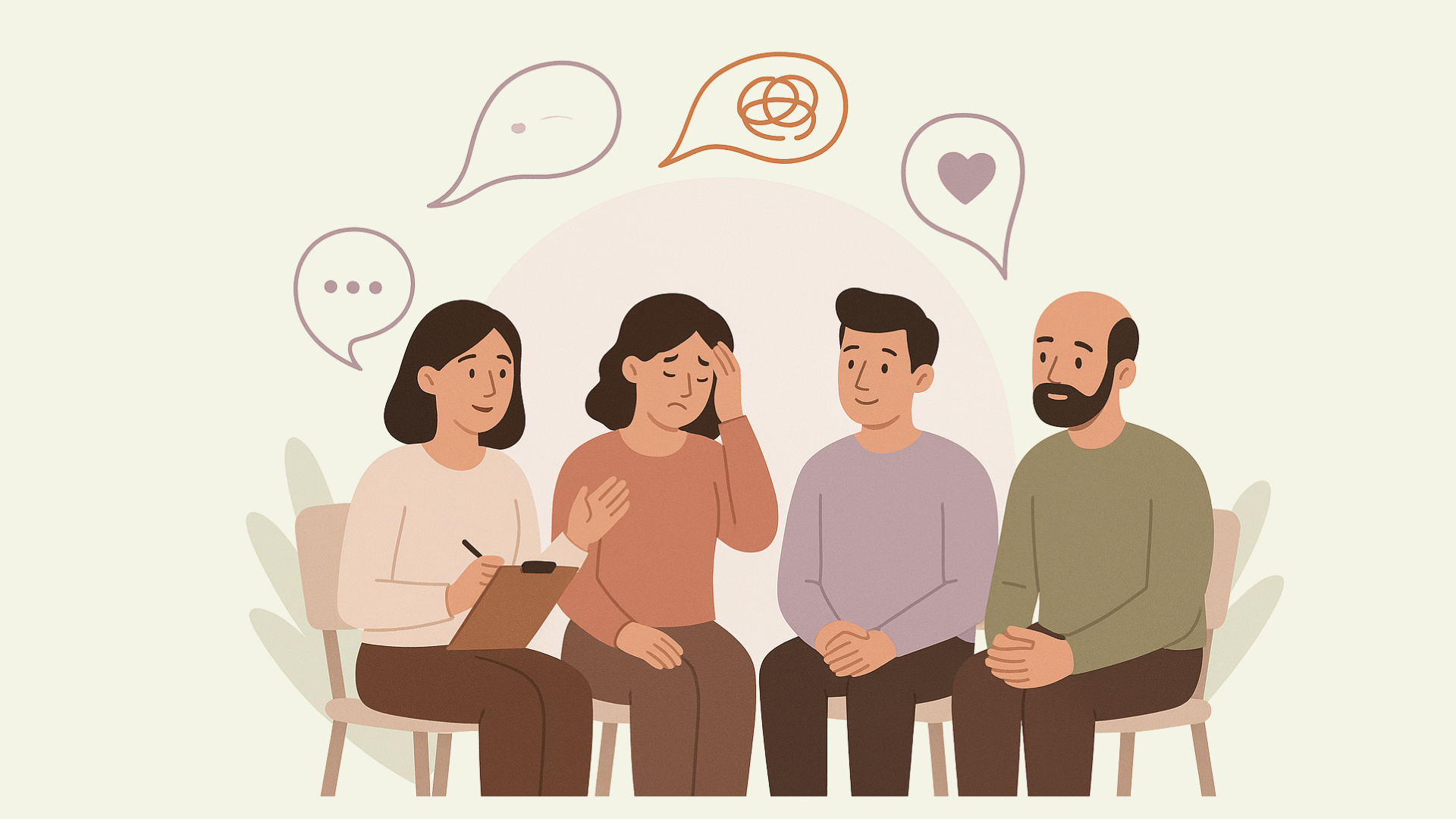Trauma therapy online Real healing in a digital space

Trauma has a way of shaping our lives in profound, sometimes invisible ways. It affects our emotional, mental, and even physical well-being, often leaving us feeling disconnected, stuck, or overwhelmed. For many, trauma’s impact can be long-lasting, influencing how we navigate relationships, manage stress, and even how we see ourselves. But healing from trauma is possible, and thanks to the rise of online therapy, it’s more accessible than ever. In this article, we’ll explore how online trauma therapy works, the types of approaches therapists use, and how it can be a vital part of the healing journey.
What is trauma and how does it affect us?
Trauma is the emotional and psychological response to a deeply distressing event or series of events. It goes far beyond the initial shock or pain of the event—it often lingers, reshaping how a person views the world and interacts with others. The effects of trauma can show up in many ways, from anxiety and fear to feelings of numbness or anger.
Common sources of trauma include:
-
Abuse or neglect: Physical, emotional, sexual, or psychological abuse, often experienced in childhood, can have long-term emotional effects.
-
Violence or assault: Physical assault, sexual assault, or even witnessing violent acts can lead to serious trauma and disorders like PTSD.
-
Accidents or natural disasters: Life-threatening accidents or surviving natural disasters can leave lasting emotional scars.
-
Medical trauma or life-threatening illness: Facing a serious illness or undergoing painful medical treatments can be deeply traumatic.
-
Loss, betrayal, or emotional abandonment: Losing a loved one or experiencing betrayal or abandonment can deeply affect someone’s sense of safety and trust.
Symptoms of trauma can include persistent anxiety, flashbacks, nightmares, emotional numbness, irritability, and difficulty trusting others. The effects often carry over into other areas of life, such as relationships, work, or self-esteem, and can lead to co-occurring mental health issues like depression or anxiety. Healing from trauma requires not only acknowledging these effects but also learning how to process and cope with them in a healthy way. That’s where therapy comes in.
What is trauma therapy?
Trauma therapy is a specialized form of treatment aimed at helping individuals process and heal from their traumatic experiences. Unlike conventional therapy, trauma therapy focuses on gently guiding individuals to face and understand their pain, rather than forcing them to relive traumatic events repeatedly.
The primary goals of trauma therapy include:
-
Regulating emotions: Many people who’ve experienced trauma struggle with intense feelings like anger, sadness, guilt, or shame. Therapy helps individuals identify these triggers and develop healthier ways to cope with them.
-
Rebuilding a sense of safety: After trauma, people often feel unsafe or constantly on edge. Trauma therapy works to restore a sense of safety and control, helping individuals trust themselves and their surroundings again.
-
Understanding the impact of trauma: Therapy encourages individuals to explore how trauma has shaped their thoughts, behaviors, and emotions. Understanding these effects can help reframe harmful patterns and promote healing.
-
Processing traumatic memories: While therapy doesn’t require reliving the trauma, it does guide individuals through the process of confronting and integrating distressing memories, reducing their emotional charge.
-
Preventing re-traumatization: By addressing the root causes of trauma and learning effective coping mechanisms, individuals can reduce the chances of being triggered in the future, allowing them to engage with life more fully.
Healing from trauma is a brave journey, and therapy is an essential part of that process. It’s about learning to live with the trauma, not letting it control you.
How online trauma therapy works
Online trauma therapy has become a game-changer for many, providing flexibility, privacy, and accessibility that traditional in-person therapy may not offer. Delivered through secure, encrypted video sessions with licensed trauma-trained therapists, online trauma therapy ensures that clients receive the same level of care they would in-person—while enjoying the convenience and comfort of being at home.
In addition to live video sessions, online trauma therapy often includes various digital tools and resources to enhance the therapeutic process:
-
Worksheets and exercises: Structured exercises to help clients reflect on their emotions, thoughts, and physical sensations related to trauma.
-
Journaling prompts: Thought-provoking questions that encourage emotional expression and self-reflection in a safe, guided way.
-
Guided exercises: Audio or video recordings of mindfulness, meditation, or relaxation techniques to help clients manage stress and anxiety.
-
Psychoeducational materials: Resources explaining the neurobiology of trauma and effective coping strategies.
These tools help individuals continue their healing journey between sessions and foster a deeper understanding of their trauma. Online trauma therapy is also highly flexible sessions can be scheduled at times that work best for the client, which is especially helpful for those with busy schedules or who live in different time zones.
For individuals who experience anxiety or agoraphobia, the ability to engage in therapy from the comfort of home can be particularly transformative, making it easier to begin or maintain therapy without feeling overwhelmed.
Evidence-based approaches used online
Several evidence-based trauma therapies have been successfully adapted for online use, ensuring that individuals receive effective, scientifically supported care in a digital format. These therapies include:
-
EMDR (Eye Movement Desensitization and Reprocessing): EMDR uses a structured, eight-phase approach to help clients process traumatic memories. Through bilateral stimulation (like eye movements or auditory tones), EMDR helps reduce the emotional intensity of traumatic memories. Online EMDR therapists use digital tools to facilitate this process.
-
Trauma-Focused Cognitive Behavioral Therapy (TF-CBT): TF-CBT helps individuals challenge distorted thoughts related to trauma and replace them with healthier patterns. It’s particularly effective for both children and adults dealing with trauma. Online platforms offer digital worksheets and communication tools for this method.
-
Somatic Experiencing (SE): SE focuses on the body’s response to trauma. It helps individuals release "trapped" energy in the body, which may be preventing full recovery. Online SE therapy involves guiding clients through somatic exercises to help regulate the nervous system.
-
Internal Family Systems (IFS): IFS therapy helps individuals explore their internal "parts," such as protective parts and vulnerable parts, to heal emotional wounds. In online IFS therapy, the therapist works with the client to connect with and heal these parts in a structured, safe environment.
These therapies have been proven effective in addressing trauma symptoms and are delivered via secure online platforms by licensed therapists, ensuring the integrity of treatment remains intact in the digital space.
Advantages of online trauma therapy
There are many benefits to online trauma therapy that make it an ideal option for many:
-
Privacy and comfort of home: Engaging in therapy from the safety of your own home can make it easier to open up and explore difficult emotions. The familiar environment often reduces anxiety and helps clients feel more at ease.
-
Accessibility: For people in rural or underserved areas, or those with mobility issues, online therapy removes geographical barriers, making specialized care more accessible.
-
Reduced anxiety around travel: Many individuals with trauma experience anxiety about traveling or navigating unfamiliar spaces. Online therapy eliminates this barrier, allowing individuals to focus on the healing process instead of the stress of getting to a physical office.
-
Flexible scheduling: Online therapy often offers more flexible appointment times, making it easier to fit therapy into a busy life. Evening and weekend appointments are commonly available.
-
Continuity of care: Whether traveling or relocating, online therapy ensures that clients can continue their healing journey without interruption, maintaining consistency in their treatment plan.
Online trauma therapy makes accessing care easier, more private, and more flexible—empowering individuals to take control of their healing process.

Is online trauma therapy effective?
The effectiveness of online trauma therapy is backed by a growing body of research. Studies have found that online trauma therapy, including approaches like EMDR and TF-CBT, can be just as effective as in-person therapy. Clients report reductions in symptoms like anxiety, hypervigilance, and emotional dysregulation, and many feel more comfortable and open in an online setting.
Key benefits of online trauma therapy include:
-
Research validation: Studies show that online trauma therapy is as effective as traditional in-person sessions in treating trauma-related symptoms.
-
Client comfort: Many individuals feel more comfortable engaging in therapy from home, which can foster a stronger therapeutic alliance and lead to faster progress.
-
Professional standards: Online therapists adhere to the same professional standards and ethical guidelines as in-person therapists, ensuring privacy and security.
Online therapy allows individuals to access specialized trauma care without the additional stress or logistical challenges that traditional therapy may present.
Choosing the right online trauma therapist
Finding the right therapist is crucial for a successful healing journey. When selecting a trauma therapist online, consider these factors:
-
Credentials and trauma-specific training: Ensure the therapist is licensed and has experience in evidence-based trauma therapies like EMDR, TF-CBT, or SE.
-
Sensitivity to trauma pacing: Trauma therapy requires a careful and thoughtful approach. A good therapist will understand the pace and sensitivity required to guide you through the healing process.
-
Trust and safety: Pay attention to how you feel during consultations. The therapeutic relationship is key to successful healing—choose someone who makes you feel safe, understood, and validated.
-
Therapist matching services: Many platforms offer matching services that can help you find a therapist based on your specific needs, preferences, and therapeutic goals.
Choosing a therapist who makes you feel safe and supported is essential to your healing process.
What healing really looks like
Healing from trauma is not a linear process—it’s a journey with ups and downs. But with consistent therapy, many individuals experience profound changes:
-
Improved emotional regulation: Clients learn healthier ways to manage emotions, reducing the frequency of panic attacks, emotional outbursts, and overwhelming feelings.
-
Increased self-compassion: Therapy helps clients understand their trauma responses and develop self-compassion, replacing self-blame with self-understanding.
-
Stronger relationships: As trauma is processed, individuals develop healthier connections with themselves and others, setting boundaries and fostering trust.
-
Reduced trauma symptoms: Flashbacks, nightmares, and hypervigilance often decrease, leading to a more stable emotional state.
-
Greater sense of agency: Healing from trauma empowers individuals to take charge of their lives, making decisions that align with their values and goals.
True healing from trauma is possible—and it's worth pursuing. With the right support, you can reclaim your life and build a future that’s no longer defined by the past.
Conclusion
Trauma doesn’t define who you are, but it can deeply influence how you live your life. Online trauma therapy offers a flexible, private, and effective path to healing, making professional support accessible to more people than ever before. Whether you’re seeking help for yourself or a loved one, healing is possible. By taking that first step into therapy, you're on your way to reclaiming peace, joy, and resilience.
Farah Osman
Cultural engagement specialist at Thera
Tags:





